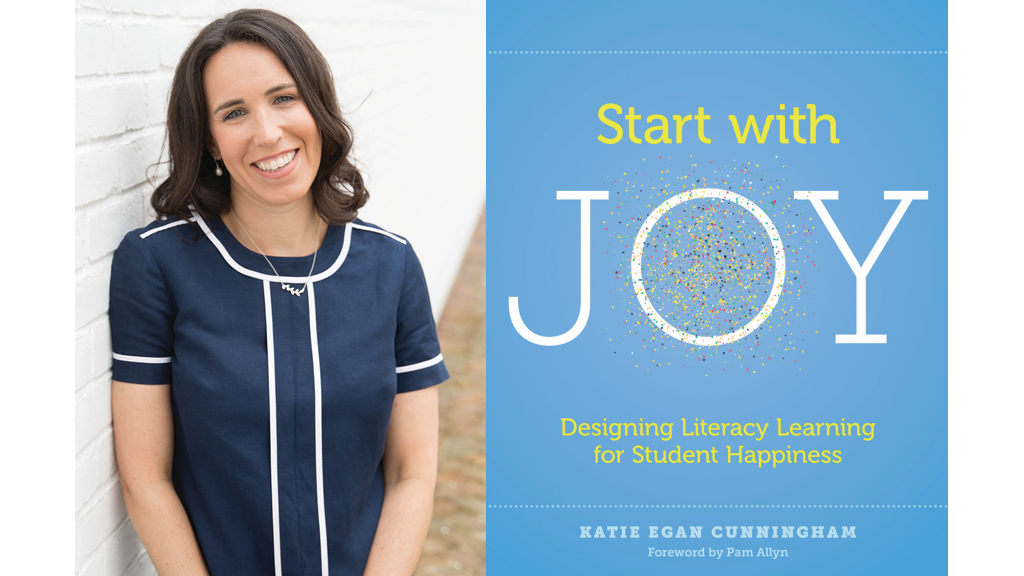If you only associate the term “spark joy” with decluttering and home organization, think again. In her new book, Start with Joy, teacher-educator Katie Egan Cunningham says that elevating joy should be as much of a priority in literacy learning as proficiency or achievement. For her book, Cunningham, an associate professor of literacy education at Manhattanville College in New York, took a deep dive into the psychology of happiness. She found research showing that student happiness is entwined with motivation and grade point average. She discussed with ASBJ’s Michelle Healy the importance of providing all students with a foundation in literacy education that has “joy at its heart”.
How has working in a variety of school settings influenced your focus on literacy instruction and joy?
What prompted me into this work is that I now work primarily with Title 1 schools, having worked previously in extremely affluent schools. We know that the keys to figuring out how to live a happy life are supported by a science of positive psychology. But why should the understanding of those key tenets, combined with what we know from the science of learning, be reserved for the privileged few? This book offers a framework for bringing joy to all students’ literacy lives. We know when we leave it up to chance, we leave children behind.

What’s the connection with social-emotional learning?
We’ve always known that there are connections to living a happy life through the act of reading, writing, creating, listening. At the same time, research shows us when you ask kids about school, they respond overwhelmingly in one of three ways: boredom, confusion, or loneliness. Also, research shows the increase in depression, anxiety, and addiction among our youth, a sign that the various institutions designed to support young people are failing them. One of those institutions is school. When it comes to literacy learning, there has been an overemphasis on strategies and skills without enough emphasis on research-based practices that allow students to engage in literacy that supports happiness.
What are some practices for joyful literacy instruction?
I focus on seven pillars—connection, choice, challenge, play, story, discovery, and movement—to use as a mental checklist when I am observing classrooms. Do I see connection between the teacher and students, students to students, and student to content? Are there characters in the material that kids care about? When these pillars are in place, it’s guaranteed to be more joyful, memorable, and purposeful for students and teachers alike. In classrooms that feel as though they are lacking in joy, the way to design a solution is to start with these pillars.
Does the book have a takeaway for board members and district leaders?
The pillars are transferable to a building context and a district context. In leading education workshops around this framework, my advice to board and district leaders is to really put themselves in students’ shoes and reflect on the student experience as much as possible. Also, think about what data you have around the well-being of students in your schools.

Share this content